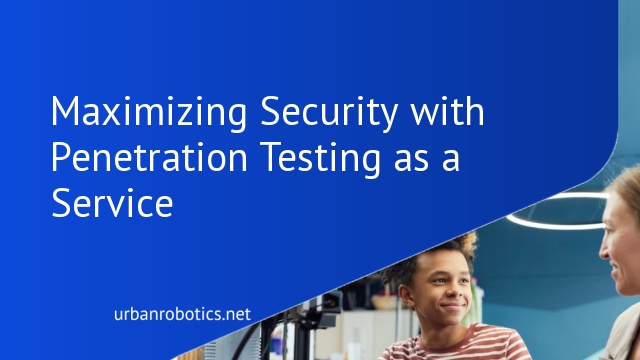Enhanced security is undeniably a laudable goal for all organizations. In the digital world where threats lurk in every corner, organizations must ensure that their systems are impenetrable to malicious attacks.
To help achieve this critical goal, Pentesting as a Service (PTaaS) has emerged as a valuable tool. By simulating attacks on your organization’s systems, PTaaS uncovers potential vulnerabilities and weaknesses that have the potential of being exploited by cybercriminals.
PTaaS is no mere buzzword; it’s an advanced technology that offers routine security testing. A significant shift from conventional methods, it proffers the capability to conduct continual testing on your internal systems utilizing a technological, service-oriented approach.
As a part of your established security strategy, PTaaS providers can offer both partial penetration tests focused on specific aspects and full stack testing, covering your entire IT fundamentals.
Benefits of Penetration Testing as a Service
The benefits of PTaaS are manifold. Here’s a digestible overview:
- Improved Security Outcomes: Penetration testing services focus on identifying vulnerabilities and security flaws. By outsourcing penetration testing to an external vendor, you are essentially bringing on board a whole team of in-house pen testers. These experts employ both manual testing techniques and, increasingly, AI-enabled tools to spot issues more accurately and swiftly. Regular vulnerability scanning means that new issues are quickly found and addressed, thus resulting in improved security outcomes.
- Cost savings: Cybersecurity is not a place to skimp, but that does not mean it cannot be cost-effective. With PTaaS, you will observe significant cost savings compared to maintaining an in-house team of penetration testers. On-demand testing ensures you only pay for what you need, plus, the subscription model employed by most providers eliminates the need for long-term contracts.
- Access to Industry Experts: An appealing aspect of PTaaS is the unlimited access to a team of security experts. These experts stay updated with the latest tools and technologies, providing your company with a level of service and expertise that could be hard (and expensive) to maintain in-house.
- Accelerated Turnaround Time: Given that security testing is their primary focus, PTaaS providers can often identify and fix vulnerabilities much faster than an in-house team. This accelerated turnaround time means that problems are resolved swiftly and efficiently, minimizing any potential impact on your services and customers.
- Flexibility: Providers typically offer a variety of services based on the company’s needs. From regular rolling penetration tests that can adjust their focus based on your organization’s requirements to one-off tests to support specific initiatives like M&A due diligence, there’s flexibility to match your business’s needs.
- Higher Quality Testing: With dedicated PTaaS providers, organizations enjoy a higher level of testing quality. They combine manual testing with automated testing for a comprehensive package. This means that services from these providers are often more in-depth relative to what in-house penetration testers could manage, leading to a higher-quality security strategy.
- Constant Innovation: The best providers ensure they’re at the forefront of the industry. Rapid advancements in penetration testing techniques mean an ongoing evolution in the services offered by PTaaS providers. By choosing an innovative PTaaS provider, you’ll have continual access to the most advanced capabilities in security testing.
From an ROI perspective as well as value, PTaaS is a winner. With a commitment to maximizing security, well-executed PTaaS can strengthen your security posture by enabling you to uncover vulnerabilities and address them proactively, raising your organization’s security standards.
Considerations when Choosing a PTaaS Provider
When embarking on appointing a trusted PTaaS provider, a number of critical factors should be assessed. Reflect on the provider’s qualifications in terms of their track record, reputation, and credentials within the industry. Appraised security qualifications of the provider can strengthen your decision.
The provider’s penetration testing methodology is a fundamental consideration to make. A robust methodology typically involves planning, scanning, gaining access, maintaining access, and analyzing the results. Penetration Testers with strong methodological principles use a systematic approach, which enhances security by making their assessments exhaustive and comprehensive.
Scrutinize their penetration testing report as an indicator of the quality and depth of their service. An informative, lucid reports bearing detailed records of how the test was performed, the findings, and potential steps for remediation is a must. Also, consider the balance the service provider strikes between automated testing and manual testing for a comprehensive package of services.
Last but not least, analyze the qualifications of the testing team, the level of service availability during testing, and the availability of remediation services, should an unwanted event occur.
Combining Penetration Testing and Static Application Security Testing
To bolster your software security, consider combining penetration testing with Static Application Security Testing (SAST). This combination may offer a more coherent view of your software’s security posture. SAST, which conducts a ‘white-box’ testing of your application’s source code, can detect potential security flaws. These could range from input validation errors to more sophisticated vulnerabilities, including integration faults.
Pairing these two methodologies allows for a more detailed prioritization, resulting in an efficient allocation of resources to scrutinize problem areas. Hence, aligning both strategies can lead to a more comprehensive analysis, mitigating risks to a more significant extent.
Penetration Testing As A Service
Maximizing security through Penetration Testing as a Service is a verified and surefire way of safeguarding your organization against cyber threats. The advent of PTaaS extends the advantage of routine security testing imbued with advanced technology, making it an alluring mate to your security strategy.
Outsourcing penetration testing reaps richer and more meaningful advantages than just being a cost-saving strategy. It allows access to an expert team of in-house pen testers who keep abreast of the latest tools and technologies.
While metrics like qualifications, penetration testing methodology, and the provider’s ability to align with your organization’s specific security needs matter, the collaboration with a PTaaS provider’s team can also influence the achievement of your cybersecurity goals.
The strategic blend of Penetration Testing and Static Application Security Testing underscores the importance of a continuous process to keep refining and enhancing security. In effect, PTaaS is an alliance that protects your technical infrastructure from malicious attacks, making it an increasingly attractive proposition to businesses seeking to fortify security.
Invariably, the prevalent era of cybersecurity necessitates adopting forward-thinking technologies like PTaaS, which form a prominent part of the CISO’s guide to PTaaS. The harnessing of PTaaS and its implementation is a path forward toward improving security outcomes, optimizing ROI, and overall, building a resilient organization.





